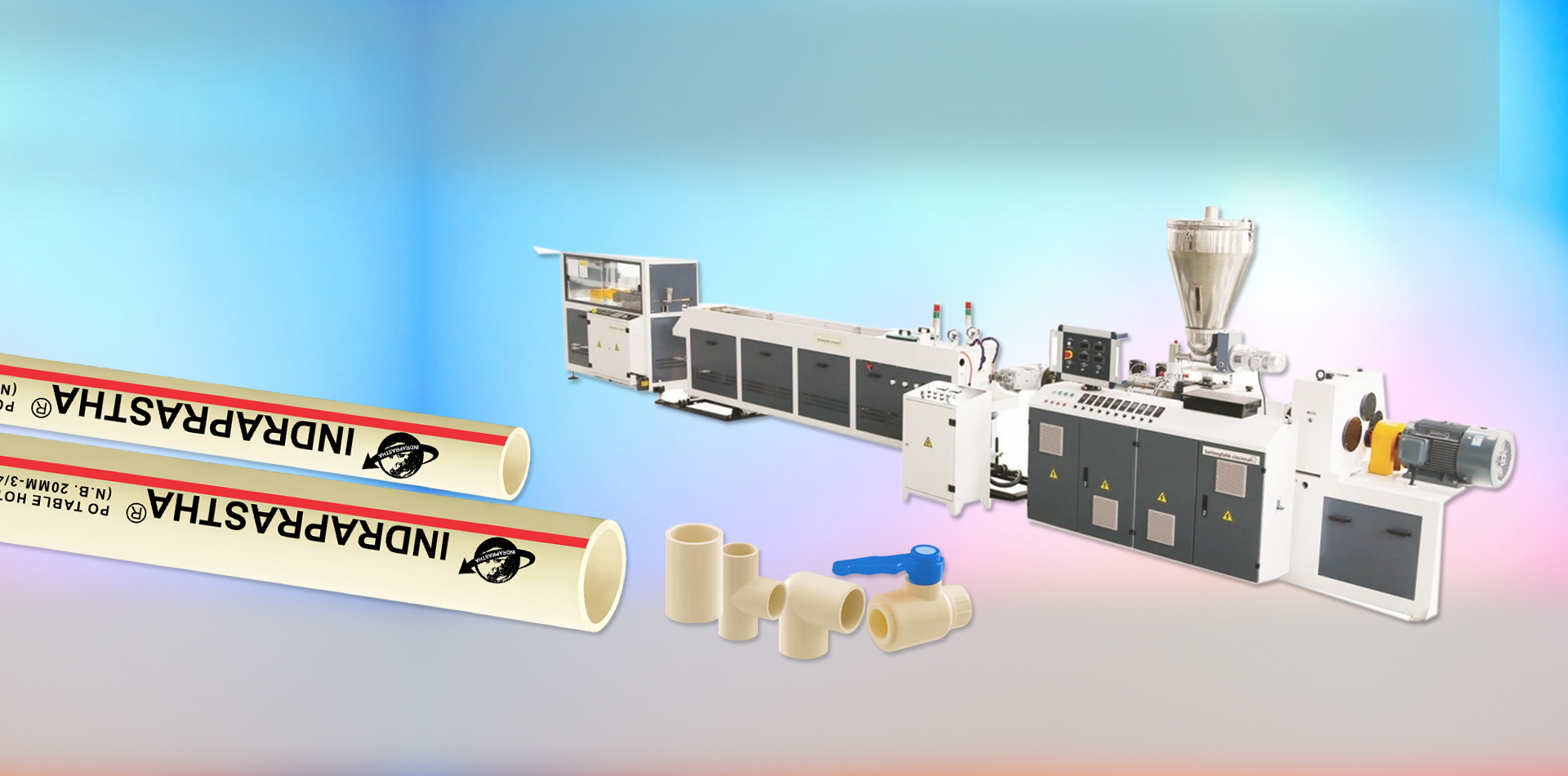
Rotational moulding, also known as roto moulding is a process of manufacturing hollow plastic products. This technology has expanded the capabilities of polymer product manufacturers by enabling them to create light-weight, seamless, stress-free parts of virtually any size in the most complex shapes.
Today in the world, when you look in the market plastic water tank are very competitive, highly selling and popular product. There are several reasons for it competitiveness:
Indraprastha Industries Ltd. turns PVC into CPVC. You can see our part of the process in the chart above, outlined by the dotted line.
For that higher consummation plastic water tanks should have special qualities. The qualities are:
The principle of rotational moulding of plastics is simple. Basically the process consists of introducing a known amount of plastic in powder (granular) or form into a hollow, shell-like mould. The mould is rotated and/ or rocked about two principal axes at relatively low speeds as it is heated so that the plastic enclosed in the mould adheres to the mould and forms a monolithic layer against, the mould surface. The mould rotation continues during the cooling phase so that the plastic solidifies. When the plastic is sufficiently rigid, the cooling and mould rotation is stopped to allow the removal of the plastic product from the mould.
Rotational moulding, known also as rotomouldingor, rotocasting, is a process for manufacturing hollow plastic products. For certain types of liquid vinyls, the term slush moulding is also used. Although there is competition from blow moulding, thermoforming, and injection moulding for the manufacture of such products, rotational moulding has particular advantages in terms of relatively low levels of residual stresses and inexpensive moulds. Rotational moulding also has few competitors for the production of large (> 2 m3) hollow objects in one piece.
Moulding process called "Slush moulding process". The material filled to the mould, heated until liquid, pour out excess material, undergo for cooling and it forms uniform solid layer of plastic. In rotational moulding, and above "Slush moulding process" is developed.
The basic steps of water tank manufacturing in rotational moulding divide into main four main steps as following:
Material preparation and mould charging Material preparation
The raw material (LLDPE) or granules which receive for the manufacturing process are not ready to use. The material undergoes to main steps:
Extruding the material with master batche of different colours.
In the grinding process, frictional heat increases the temperature of the metal cutting faces, the individual polyethylene particles, and the surrounding air. Because of that reason the temperature must be controlled so that it does not rise beyond the melting point of the polyethylene or to a critical softening temperature, prior to melting, when the particles begin to adhere to each other. This can cause blockages in the passage of new material entering the mill. Grinding temperature has the most significant effect on the quality of the powder. The effect on dry flow and bulk density values are given with respect to the temperature vs Density variation during the grinding process. Pulverisation (pulverising the colour material into powder form).
Dry blending is the best way of coloring rotational moulding grade powders. It is attractive because cost savings can be made by purchasing bulk quantities of natural material and coloring this as required prior to moulding. In this production black and white colour concentrators are used. Other additives, such as UV modifiers, impact modifiers, thermal stabilizers, and antioxidants are mixed during the dry blending process. After the above processes the material is ready to use for rotational moulding.